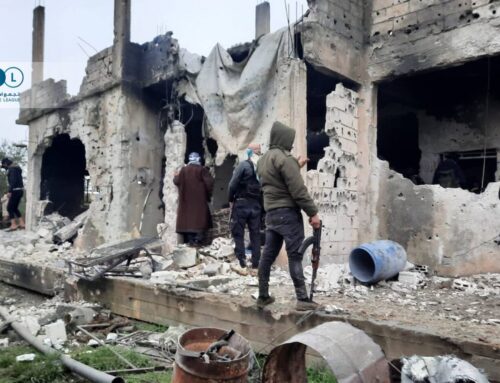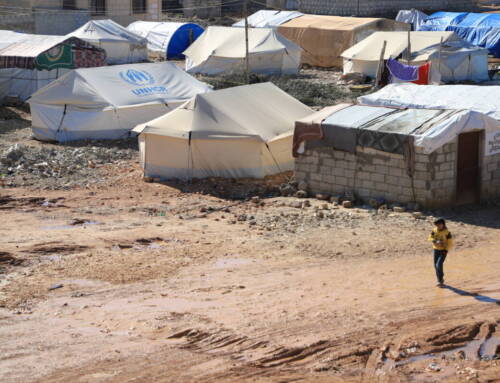FSA ‘split’ as Islamic State moves into Homs
February 9, 2015 Free Syrian Army forces have had a […]
9 February 2015
February 9, 2015
Free Syrian Army forces have had a firm grip on the region north of Homs city since beginning of the revolution.
Rebel numbers in the area were bolstered in mid-2014, when a UN-brokered truce escorted FSA fighters holding out in Old Homs to the northern countryside.
More recently, Jabhat a-Nusra has increased its presence in the region, forcing its way into opposition-controlled city of Rastan in November 2014, after winning a brief skirmish with local rebels.
Nusra and a collection of FSA-affiliated local brigades now share rule over Rastan and the rest of northern Homs.
Their newest concern is the Islamic State’s increased interest in Homs province, which borders the IS-controlled province of A-Raqqa to the east.
The FSA is “split” in its stance over the Islamic State coming to Homs, says Abu al-Waleed al-Baligh, the alias of an FSA brigade leader in northern Homs.
“One side favors confronting IS and its followers, while the other prefers welcoming and pledging allegiance,” al-Baligh, who was also a lieutenant in the Syrian army before defecting during the revolution, tells Syria Direct’s Mohammad Al-Shamdin.
Q: Why is IS advancing toward Homs and Hama? Why do you think it wants to extend its influence in that direction?
IS has changed its military tactics in Syria. They have moved beyond their primary bases in Deir e-Zor and A-Raqqa, and now threaten the Syrian army’s gains in the region around Homs and Hama. It appears that IS aims to distract the Syrian army and draw it away from IS’s strongholds in Deir e-Zor and A-Raqqa.

Q: The FSA and Jabhat al-Nusra control most of the rural areas in Homs province. What is their reaction to IS advancing toward Homs?
The FSA leadership is split between support for, and opposition to, the presence of IS in Homs. One side favors confronting IS and its followers, while the other prefers welcoming and pledging allegiance to IS and the [pro-IS] Assoud al-Islam Brigade under the leadership of Rafid Taha in Telbisa.
With regard to Jabhat al-Nusra, they maintain a firm position [against IS] and as such have surrendered their fronts to the FSA, sounded a call to arms, and begun to close off the entrances in the eastern countryside to IS bases.
Q: Has there been any confrontation between IS and the FSA and Jabhat al-Nusra?
A war of elimination and kidnapping has broken out between the FSA and IS. The most prominent member killed by IS, Abu al-Muqdam, was a brigadier-general of artillery in Ahrar a-Sham. The FSA assassinated a top IS member in Homs, Ayaad al-A’weed, while he was on his way from A-Raqqa to a village in rural eastern Homs.
As for Jabhat a-Nusra, the most important move they have done is detaining one IS [leader], Fadel Ayoub.
Q: How has the presence of IS affected the balance of power, especially with regard to the regime?
There is no doubt that IS’s presence in Homs has complicated the calculus of the region, particularly in light of the increase in IS supporters. The current danger is illustrated by IS’s attempt to control oil targets and by its control of gas in the Shaar gas fields, where they now control one of the largest energy production sites in Syria. The regime received a severe blow with the killing of a number of its soldiers at the hands of IS during the attack on Shaar.
The battles between the regime and IS are ongoing, as the regime wants to control rural Homs again. This shows that IS is using a strategy of creating new battlefronts away from its bases in Raqqa and Deir e-Zor in order to protect them from sudden attack.
For more from Syria Direct, like us on Facebook or follow us on Twitter.







